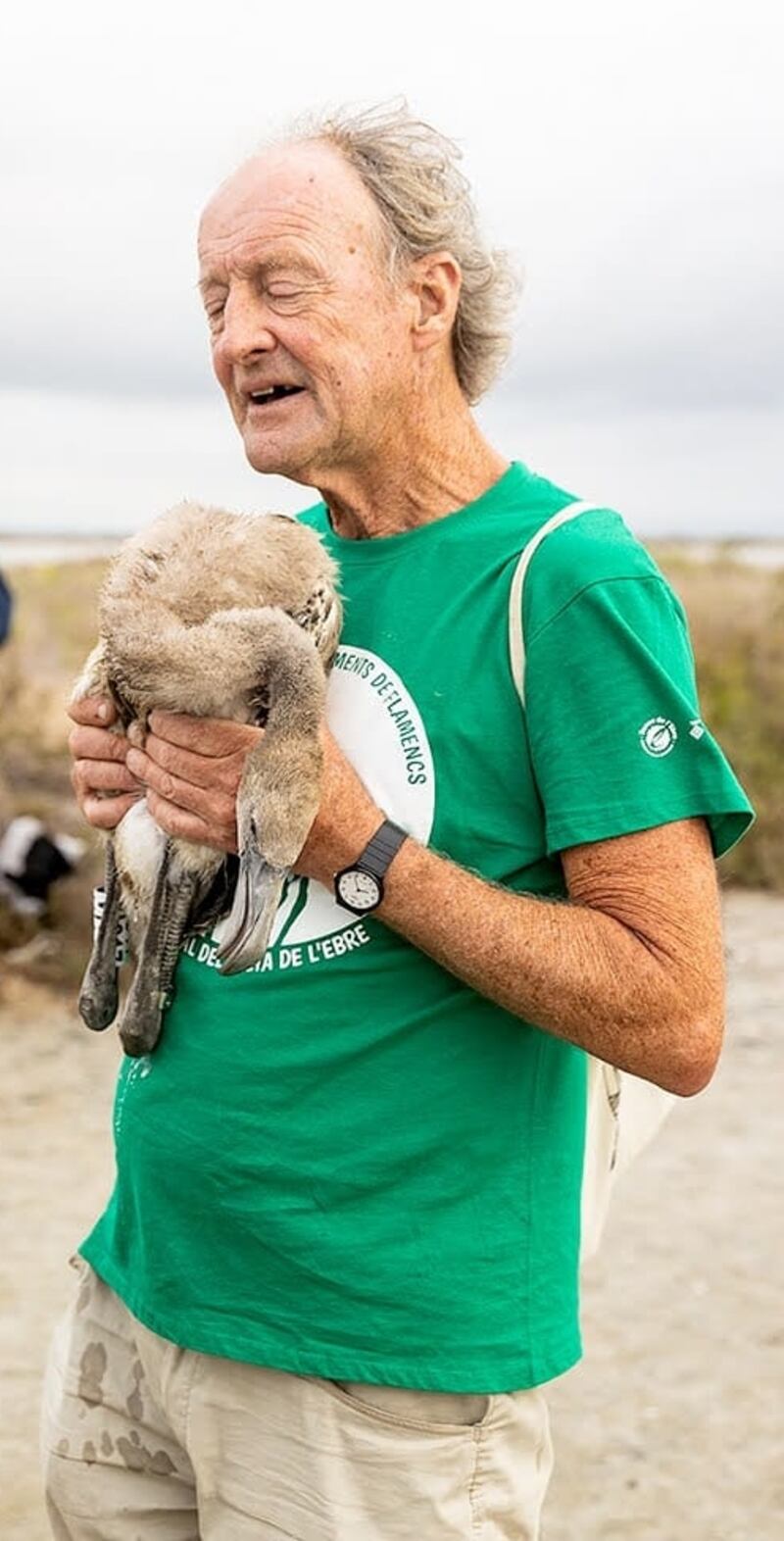I’m an active birdwatcher and a volunteer in the Ebro Delta Nature Reserve in Catalonia, so when I get an invitation to participate in the ringing of young flamingos this summer I am thrilled.
The initial information is sparse – just that we are to wear shorts and old sports shoes and register for and attend an information session on the Saturday evening before the actual ringing, which will take place one Sunday morning, 4am-10am.
I am intrigued about how it will be done: will nets be used to capture the birds?
I do know, from observation, that young flamingos are grey, yet to take on the distinctive pink colour that comes from their staple diet of crustaceans. Also, that they are reared in large nursery groups, cared for and guided by a few adults. I have not considered that they are still too young to fly.
READ MORE
The depth of organisation of the task is evident on the Saturday evening before the ringing at the sports centre, where we all gather, some 238 people in total. Apart from the volunteers, there are park rangers, organisers, photographers, biologists and other experts.

On registering we are given a coloured T-shirt (mine is green – appropriate for an Irish man, I feel) and a sticker to put on it with your name, group number and role. An accompanying booklet details the procedures and tasks to be carried out by every person in each role. These are elaborated on in the following talk and groups meet briefly to arrange transport for the morrow.
On the Sunday morning there is time for a quick coffee and bun before we are load into cars for the trip out to the nature reserve at the very end of the delta. It is off-limits to the public.
The long convoy splits into three groups just before we reach our destination, a sandy spit flanked by lagoons. Silence is paramount.
We are each given a long bamboo staff and follow our leader, advancing out into the lagoon in single file, a metre apart.
Although the water is only shin-high, maximum concentration is needed as the mud bottom is very slippery. The silence is broken only by the slosh of water and the odd bird call. The darkness and the precarious footing all make it a surreal experience.
As dawn begins to break we make out the silhouettes of the second group opposite, stretching out like us from the waist-high fences that will funnel the flamingos into a circular enclosure.
However, all eyes are on a large dark patch at the far end of the lagoon – presumably the flamingo nursery.
As the third group approaches from behind, the patch begins to edge towards us, the adult flamingo carers flying off.
It all happens very quickly, the young birds moving quicker, wings flapping. When I manage to sluice my way to the sandy island where the birds are penned, it is a sight to see.
One poor fellow gets left behind, but eventually manages to follow the rest and is rewarded with warm applause
The slender, grey gangly birds surge from side to side in slow waves, almost within arm’s reach. When we have had our fill of the spectacle, we are summoned to work at the four pods leading off the enclosure.
Each bird is passed from these to the waiting lines of “porters”, who put the bird’s back to their chest, their two hands encircling the bird’s folded legs and wings, before bringing it around the pod circuit.
First it is ringed, then its beak and wings measured, and finally it is weighed. All this data is carefully annotated by the group’s secretary.
Alongside the line of porters depositing their bundles at the weighing table is another of “releasers” whose task is to carry the bird back to the mud flats and set it down carefully so it can gather its strength, push itself up on to its legs and totter off back to the lagoon.
I am one of these and approach the table with much trepidation, eyeing the bird that is to be mine.
The vast majority are docile, their necks and heads hanging loosely. I figure they have more reason to be nervous than I have, so I whisper words of reassurance to my warm charge nestled to my chest as I carry it back to liberty.
When a sufficient number is deemed to be done, we line the vee to watch the final act. The gate is opened and the remaining birds flock out, trotting back to where they have come from, no doubt wondering what that was all about.
One poor fellow gets left behind, but eventually manages to follow the rest and is rewarded with warm applause.
The day ends with a fideuá (noodles cooked in fish stock in large paella pans) for all participants, accompanied by wine and good cheer.
- Colm Rush, who is originally from Dublin, has taught English in Spain, Italy, Cyprus and Tunisia, as well as in Ireland and England. He settled in Pamplona, in northern Spain, and taught for 15 years at the Official School of Languages, a language-teaching centre for adults. He now lives in L’Ametlla de Mar, in Catalunya
- If you live overseas and would like to share your experience with Irish Times Abroad, email abroad@irishtimes.com with a little information about you and what you do
- Sign up to The Irish Times Abroad newsletter for Irish-connected people around the world. Here you’ll find readers’ stories of their lives overseas, plus news, business, sports, opinion, culture and lifestyle journalism relevant to Irish people around the world
















